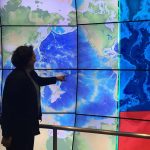Source: My Modern Met
Author: Jessica Stewart
Thanks to the Schmidt Ocean Institute, we’re getting a whole new perspective on life in the deep sea. After exploring the depths of the Indian Sea, they’ve released 4K footage of the Ningaloo Canyons. Located off the western coast of Australia, this previously unvisited area is the location of the institute’s latest expeditions—and the findings are incredible.
The canyons were visited by the ROV Sebastian, an underwater remotely operated vehicle which can go as far as 14,750 feet underwater. This far deeper than any human could ever dive, and the ROV can also stay at that depth far longer than any human-operated vehicle. Thanks to this technology, we’re able to stay on land and see the wonders far below the sea.
Continue reading here.










